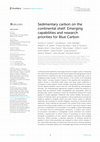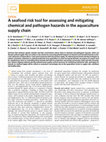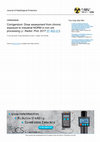Papers by Franck Dal-Molin

Achieving the End State of a Nuclear Licensed Site
Environmental Radiochemical Analysis VI
End State refers to the condition of a nuclear licensed site (or part of the site) following all ... more End State refers to the condition of a nuclear licensed site (or part of the site) following all physical decommissioning and clean-up activities required to make the site (or part of the site) available for its next use. To reach the End State, a site must be compliant with the requirments for release of the site from environmental regulations. Site operators may apply to the environment agencies for agreement for a site to be released from radioactive substances regulation (RSR). The release of the site will only be granted when all disposals of radioactive waste have ended and the site is in a state that will ensure a satisfactory standard of protection for people and the environment. A guidance document, known as “the GRR”, on the release of nuclear sites from RSR was published in July 2018. A site specific assessement of the benefits and detriments of clean-up and radioactive waste disposal options must be carried out as a requirement of the GRR. This involves identification of...
A toolbox approach to measuring carbon stocks and sequestration in the North Sea

Determination of Natural Radioactivity in Iron and Steel Materials
The Royal Society of Chemistry eBooks, Sep 17, 2019
It has been known since the 1990s that two natural radioisotopes from the uranium-238 (238U) deca... more It has been known since the 1990s that two natural radioisotopes from the uranium-238 (238U) decay series, polonium-210 (210Po) and lead-210 (210Pb), originally present in trace amounts in raw materials, are volatilised and concentrate in the form of dusts during iron ore sintering. In the UK, most of the dust generated during this process is collected by means of electrostatic precipitators and recycled back into the production system using conveyor belts. Nevertheless, a small proportion passes into the atmosphere via stack emissions and some fugitive dusts can also escape into the workplace during maintenance operations. Tata Steel UK Ltd, a major European steel making company, has developed and validated in-house radioanalytical methods for the measurement of 210Po and 210Pb in a wide range of iron-making materials including raw feedstock, waste dusts, occupational and emission filter samples. The data gathered have enabled a better understanding of the fate of 210Po and 210Pb throughout the integrated steel making route, providing essential information to support environmental permits for discharges to the atmosphere and for confirming that chronic exposure to these two natural radioisotopes does not lead to significant radiological doses to the workforce. Additionally, since the implementation of the BSS Directive 2013/59 Euratom and the Construction Products Regulation (CPR), there is a need for the European steel industry to characterise the levels of radium-226 (226Ra), thorium-232 (232Th) and potassium-40 (40K) in slag materials and confirm that those materials do not pose a significant risk of internal and external exposure to radiation when reused or recycled in building materials. This paper highlights the technical challenges encountered when measuring those natural radioisotopes in various iron-making materials, including the difficulty of validating radioanalytical methods in the absence of suitable certified reference materials.
Corrigendum: Dose assessment from chronic exposure to industrial NORM in iron ore processing (vol 37, pg 402, 2017)
Determination of Polonium-210 and Lead-210 in Iron- and Steel-Making Materials
RSC Publishing eBooks, Jul 25, 2015
This paper presents details of the challenges encountered when measuring 210Po and 210Pb, origina... more This paper presents details of the challenges encountered when measuring 210Po and 210Pb, originally present in trace amounts in raw materials and then concentrates in the form of dusts during iron ore sintering, and validating radioanalytical methods in the absence of suitable reference materials. In-house radioanalytical methods for the measurement of these two radionuclides in a wide range of iron and steel-making materials including raw materials, waste dusts and emission samples have been developed. The methods have been validated and accredited by the United Kingdom Accreditation Service (UKAS) according to the International Standard Organisation (ISO) 17025.
Journal of Radiological Protection, Nov 15, 2017
A correction is required in table 8. The final two columns were mis-labelled as intake figures vi... more A correction is required in table 8. The final two columns were mis-labelled as intake figures via inhalation (I inh ). However, for each individual (A, B, C, D and E), two successive rows were given in this table. The first relates to PM 100 and the second to PM 10 . The aerosol inhaled as PM 100 is taken to be transferred to the gastrointestinal tract and absorbed from there. This line therefore relates to intake via ingestion (I ing ) and not I inh . In the case of PM 10 , uptake is taken to be primarily from the respiratory tract, so these lines do correctly relate to I inh . I inh is therefore replaced by I with a note added at the bottom of the table specifying that intake figures via ingestion and inhalation were calculated from PM 10 and PM 100 data, respectively. The correct version is as follows.
Chapter 22. Determination of Polonium-210 and Lead-210 in Iron- and Steel-Making Materials
The Royal Society of Chemistry eBooks, Jul 15, 2015
This paper presents details of the challenges encountered when measuring 210Po and 210Pb, origina... more This paper presents details of the challenges encountered when measuring 210Po and 210Pb, originally present in trace amounts in raw materials and then concentrates in the form of dusts during iron ore sintering, and validating radioanalytical methods in the absence of suitable reference materials. In-house radioanalytical methods for the measurement of these two radionuclides in a wide range of iron and steel-making materials including raw materials, waste dusts and emission samples have been developed. The methods have been validated and accredited by the United Kingdom Accreditation Service (UKAS) according to the International Standard Organisation (ISO) 17025.

Frontiers in Marine Science
Continental shelf sediments store large amounts of organic carbon. Protecting this carbon from re... more Continental shelf sediments store large amounts of organic carbon. Protecting this carbon from release back into the marine system and managing the marine environment to maximize its rate of accumulation could both play a role in mitigating climate change. For these reasons, in the context of an expanding “Blue Carbon” concept, research interest in the quantity and vulnerability of carbon stored in continental shelf, slope, and deep ocean sediments is increasing. In these systems, carbon storage is physically distant from carbon sources, altered between source and sink, and disturbed by anthropogenic activities. The methodological approaches needed to obtain the evidence to assess shelf sea sediment carbon manageability and vulnerability within an evolving blue carbon framework cannot be transferred directly from those applied in coastal vegetated “traditional” blue carbon habitats. We present a toolbox of methods which can be applied in marine sediments to provide the evidence need...

Nature Food, 2022
Intricate links between aquatic animals and their environment expose them to chemical and pathoge... more Intricate links between aquatic animals and their environment expose them to chemical and pathogenic hazards, which can disrupt seafood supply. Here we outline a risk schema for assessing potential impacts of chemical and microbial hazards on discrete subsectors of aquaculture—and control measures that may protect supply. As national governments develop strategies to achieve volumetric expansion in seafood production from aquaculture to meet increasing demand, we propose an urgent need for simultaneous focus on controlling those hazards that limit its production, harvesting, processing, trade and safe consumption. Policies aligning national and international water quality control measures for minimizing interaction with, and impact of, hazards on seafood supply will be critical as consumers increasingly rely on the aquaculture sector to supply safe, nutritious and healthy diets.

Characterisation of radioactivity arising from the integrated steelworks in the UK and assessment of occupational exposure situations
Most of the materials found on the Earth’s surface, such as iron ores and all other materials ent... more Most of the materials found on the Earth’s surface, such as iron ores and all other materials entering the integrated steel-making process, contain measurable amounts of natural radioactivity mainly due to the presence of uranium-238 (238U), thorium-232 (232Th) and their respective daughter decay products. Some materials after being processed can present a relatively high concentration of natural radionuclides. These materials are defined as Naturally Occurring Radioactive Materials (NORM). Since 2010, in the United Kingdom, industries producing NORM are subject to a new permitting regime. The current regime is named Environmental Permitting Regulations 2010 (EPR 2010), recently amended and replaced by EPR2016 and is directly derived from the European Directive EURATOM 1996, itself reviewed in 2013 and replaces the previous exemption limits defined in the previous regime Radioactive Substances Act 1993 (RSA93). As a result, the steel industry is now potentially producing materials a...

Determination of Natural Radioactivity in Iron and Steel Materials
Special Publications, 2019
It has been known since the 1990s that two natural radioisotopes from the uranium-238 (238U) deca... more It has been known since the 1990s that two natural radioisotopes from the uranium-238 (238U) decay series, polonium-210 (210Po) and lead-210 (210Pb), originally present in trace amounts in raw materials, are volatilised and concentrate in the form of dusts during iron ore sintering. In the UK, most of the dust generated during this process is collected by means of electrostatic precipitators and recycled back into the production system using conveyor belts. Nevertheless, a small proportion passes into the atmosphere via stack emissions and some fugitive dusts can also escape into the workplace during maintenance operations. Tata Steel UK Ltd, a major European steel making company, has developed and validated in-house radioanalytical methods for the measurement of 210Po and 210Pb in a wide range of iron-making materials including raw feedstock, waste dusts, occupational and emission filter samples. The data gathered have enabled a better understanding of the fate of 210Po and 210Pb t...
Production and Characterisation of Reference Materials in Support of Naturally Occurring Radioactive Material (NORM) Industries
Special Publications, 2019
Naturally occurring radioactive material is a problematic by-product of a range of industries and... more Naturally occurring radioactive material is a problematic by-product of a range of industries and needs to be handled, stored, processed and disposed of in a safe and economic manner. Accurate characterisation of such material should be underpinned by measurement of certified reference materials in order to validate the methods employed and ensure quality control. This work highlights the current shortage of suitable reference materials and the approach being followed to address this issue, initially for the steel and oil and gas industries.
Analytica Chimica Acta, 2017

Journal of radiological protection : official journal of the Society for Radiological Protection, Jan 20, 2017
Radiological exposures due to naturally occurring radioactive material (NORM) can occur during a ... more Radiological exposures due to naturally occurring radioactive material (NORM) can occur during a wide range of work-related activities in the mineral processing and chemical industries. However, evaluation of such exposures in industrial settings remains a difficult exercise owing inter alia to the large number of personnel, operations and plants affected; assumptions that often have to be made concerning the actual duration and frequency of exposures; the complex chemistry and radioactive disequilibria involved and typically, the paucity of historical data. In our study, the challenges associated with assessing chronic exposure to fugitive dust enriched in (210)Pb and (210)Po and the determination of the associated internal dose by inhalation and ingestion are described by reference to a case study undertaken at an iron ore sintering plant between June 2013 and July 2015. The applicability of default dose coefficients and biokinetic models provided by the International Commission f...
Naturally occurring radioisotopes (polonium-210 / lead-210) in steelmaking materials and the iron ore sintering process
ABSTRACT
25 years of RIFE—a brief history and highlights
Journal of Radiological Protection, 2021
In 2020, the UK environmental regulators and food safety agencies, published the 25th edition of ... more In 2020, the UK environmental regulators and food safety agencies, published the 25th edition of the Radioactivity in Food and the Environment (RIFE) report. This marks a quarter of a century since the landmark RIFE report was first published by the Ministry of Agriculture, Fisheries and Food in 1996, which represented the first joint monitoring and assessment report for the United Kingdom. This paper provides a summary of the RIFE report, how it has evolved and presents some case studies from over the 25 year period.
Uploads
Papers by Franck Dal-Molin